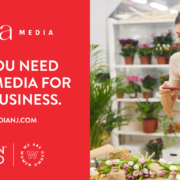Lessons from My First Year as a Mompreneur
5 Lessons I Learned in My First Year as a Mompreneur
This month, my son celebrates his first birthday. It’s miraculous how much he has changed, and amazing how quicky the time has passed – even though I’ve tried to slow down and enjoy every little moment (even the tough ones.)
Being more present is just one of the lessons I’ve learned since adding “mom” to my resume. Here are a few more:
1. The struggle to find balance is real.
One of the greatest challenges of running a business while being a mom is trying to find the right balance for yourself, your kids, your spouse – and your clients. I doubt there is a single working mother who hasn’t felt torn between being there for her family and being the best possible co-worker, boss or service provider. Personally, I’ve felt the pressure to prove I can do it all – to say yes to every project because I don’t want people to think I’m prioritizing my child’s needs over theirs.
I’m super lucky to have a spouse who is all in on sharing responsibilities. But even with help from my husband and our families, I quickly realized that being a new mom was a lot like being an entrepreneur. Each “job” comes with a unique set of challenges and rewards. And keeping both worlds running like clockwork takes determination, time management, and a solid support system.
2. The support system that works for you may not work for anyone else.
One of the most difficult choices for every working mom is finding reliable childcare that allows them to fully focus on their work. I took six weeks off after my son was born, and we were beyond fortunate that my husband had 20 weeks of paternity leave – which meant I didn’t have to stress about knowing my newborn was being well taken care of. (PSA: Companies need to be more generous with maternity/paternity leave. It’s better for everyone when both parents are caring for their baby.)
Given the high cost of day care, being able to rely on my husband and family has been a huge gift. But each of us has to figure out what works best for our situation. And not give a crap about what anyone else thinks.
3. “Flextime” takes on a whole new meaning.
Entrepreneurs are notorious for wearing many hats – and seriously, I wouldn’t have it any other way! Likewise, moms wear just as many hats — like caregiver, chef, nurse, and chauffeur. So, when it comes to keeping all of the balls in the air, flexibility is one of the greatest perks of mom entrepreneurship.
Being my own boss allows me to make my own schedule. Since my husband went back to work, I’ve been able to plan client meetings around naps and feedings. I may work more at night to get ahead of the day or over the weekend to meet a tight deadline. And having a home office eliminates the hassle (and time suck) of commuting. The catch? It can feel like the work never ends – and it’s tough to get a mental break. But I remind myself that being there for my son when he needs me most is why I do what I do.
4. Prioritize what matters and get help with the rest.
Being “on” 24/7 can take a toll. As the creative director of a branding agency, I’ve had to learn to make choices that support my ability to, well, be creative! When I take a break to feed my son, I zone out and give my brain a rest so I’m refreshed when I get back to my desk. And I hired a part-time assistant to help with some of the work. I’m such a perfectionist that letting go is incredibly hard. But maintaining my sanity means establishing priorities and asking for help – in the office and at home.
Working hard to be a great mom and business owner leaves little room for downtime. The upside is I’ve come to value my time and my talents more than ever. It’s been easier to say no to projects that aren’t a good fit – and to price my work more competitively.
5. Being a momprenuer is utterly exhausting – and deeply fulfilling.
Striking a balance between nurturing our families and nurturing our clients is the goal for every working mom. It’s also equally important to not lose sight of the things we love.
I started playing tennis in 4th grade. Since having a baby, tennis has been a welcome break and the exercise helps get my creative juices flowing. This spring, our group formed a team and we’ll be playing legit matches with other women in the area. I hope my mom will bring my son to watch – and maybe one day he’ll fall in love with it, too!
Pursuing our passions as moms and entrepreneurs feeds our souls and sets a positive example for our children. Yes, juggling all the things can be demanding on any given day. But for inspiration, we need look no further than the countless women business owners who are achieving success – and redefining motherhood in the process.







